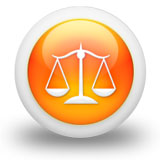We need your consent to use the individual data so that you can see information about your interests, among other things. Click "OK" to give your consent.
ASTM D4808-17
Standard Test Methods for Hydrogen Content of Light Distillates, Middle Distillates, Gas Oils, and Residua by Low-Resolution Nuclear Magnetic Resonance Spectroscopy
Translate name
STANDARD published on 1.6.2017
The information about the standard:
Designation standards: ASTM D4808-17
Note: WITHDRAWN
Publication date standards: 1.6.2017
SKU: NS-686227
The number of pages: 5
Approximate weight : 15 g (0.03 lbs)
Country: American technical standard
Category: Technical standards ASTM
The category - similar standards:
Annotation of standard text ASTM D4808-17 :
Keywords:
distillate, gas oil, hydrogen content, light distillate, middle distillate, nuclear magnetic, petroleum products, residua, resonance spectroscopy ,, ICS Number Code 75.160.20 (Liquid fuels)
Additional information
| Significance and Use | |||||||||||||||
|
4.1 The hydrogen content represents a fundamental quality of a petroleum product that has been correlated with many of the performance characteristics of that product. 4.2 This test method provides a simple and more precise alternative to existing test methods, specifically combustion techniques (Test Methods D5291) for determining the hydrogen content on a range of petroleum products. |
|||||||||||||||
| 1. Scope | |||||||||||||||
|
1.1 These test methods cover the determination of the hydrogen content of petroleum products ranging from atmospheric distillates to vacuum residua using a continuous wave, low-resolution nuclear magnetic resonance spectrometer. (Test Method D3701 is the preferred method for determining the hydrogen content of aviation turbine fuels using nuclear magnetic resonance spectroscopy.) 1.2 Three test methods are included here that account for the special characteristics of different petroleum products and apply to the following distillation ranges:
1.3 The values stated in SI units are to be regarded as standard. No other units of measurement are included in this standard. The preferred units are mass %. 1.4 This standard does not purport to address all of the safety concerns, if any, associated with its use. It is the responsibility of the user of this standard to establish appropriate safety and health practices and determine the applicability of regulatory limitations prior to use. For specific warning statements, see Sections 6.2 and 6.4. 1.5 This international standard was developed in accordance with internationally recognized principles on standardization established in the Decision on Principles for the Development of International Standards, Guides and Recommendations issued by the World Trade Organization Technical Barriers to Trade (TBT) Committee. |
|||||||||||||||
| 2. Referenced Documents | |||||||||||||||
|
We recommend:
Updating of laws
Do you want to be sure about the validity of used regulations?
We offer you a solution so that you could use valid and updated legislative regulations.
Would you like to get more information? Look at this page.




 Cookies
Cookies
